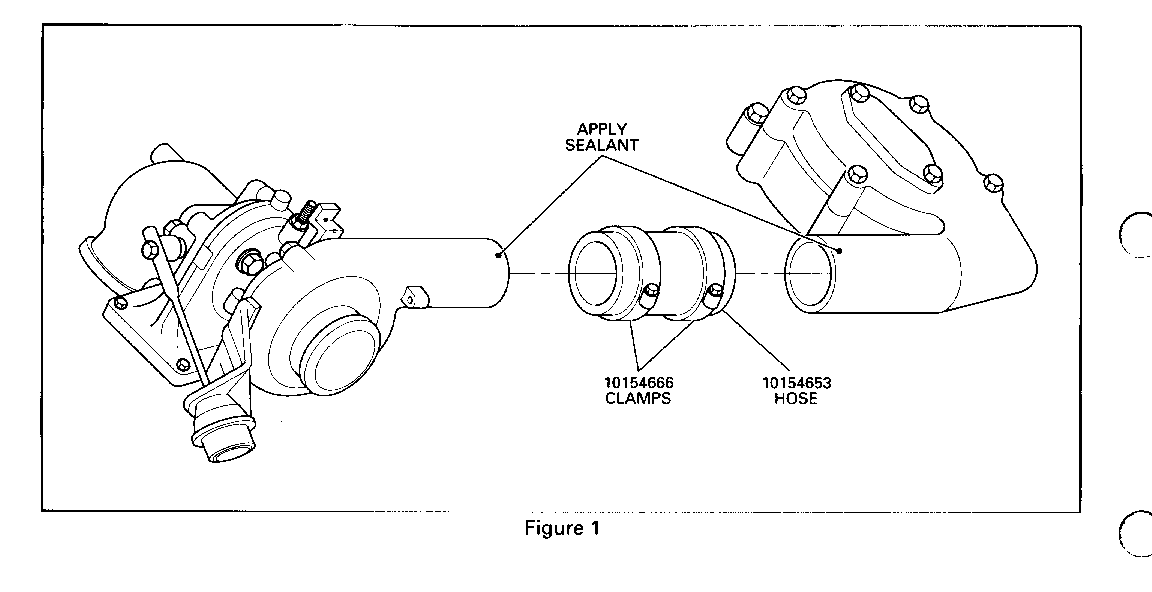OIL SEEPAGE AT TURBOCHARGER HOSE CONNECTIONS /APPLY SEALER

SUBJECT: OIL SEEPAGE AT TURBOCHARGER HOSE CONNECTIONS (APPLY SEALANT)
VEHICLES AFFECTED: 1992 "C/K" TRUCK WITH 6.5L TURBO DIESEL (VIN F, RPO L65)
CONDITION:
--------- Some 1992 model year C/K trucks with 6.5L turbo diesel engines (VIN F) may exhibit an oil wicking/seepage condition around the turbocharger compressor hose connections. Upon inspection of the turbocharger system, oil is found in the turbocharger compressor housing and outlet ducting.
CAUSE:
----- Due to the closed breather system, oil found in the turbocharger intake duct, compressor housing, and the compressor out air duct is NORMAL. The oil vapours removed from the crankcase depression regulator valve (CDRV) are discharged into the compressor inlet and condense in the inlet system. THE TURBOCHARGER SHOULD NOT BE REPLACED FOR THIS CONDITION. External oil seepage/wicking around the compressor outlet or intake manifold inlet is due to a poor hose connection (rough mating surface area, low torqued clamps, etc.).
CORRECTION:
---------- At the hose mounting locations, clean the oil wet metal components thoroughly. Install a new hose and new clamps, applying a thin coating of GM sealant 12345336 or 12345739 to the metal surfaces prior to hose installation (see figure). Tighten the inlet ducting to the proper torque specification, 4.5 to 5.6 N.m (40 to 50 lbs. in.). Wipe any excessive sealant extruding from hose ends.
IMPORTANT: If the vehicle exhibits more than a seepage / wicking condition, wash the engine components thoroughly, add florescent dye to the engine oil, operate the vehicle to find the true oil leak path, and correct.

General Motors bulletins are intended for use by professional technicians, not a "do-it-yourselfer". They are written to inform those technicians of conditions that may occur on some vehicles, or to provide information that could assist in the proper service of a vehicle. Properly trained technicians have the equipment, tools, safety instructions and know-how to do a job properly and safely. If a condition is described, do not assume that the bulletin applies to your vehicle, or that your vehicle will have that condition. See a General Motors dealer servicing your brand of General Motors vehicle for information on whether your vehicle may benefit from the information.
